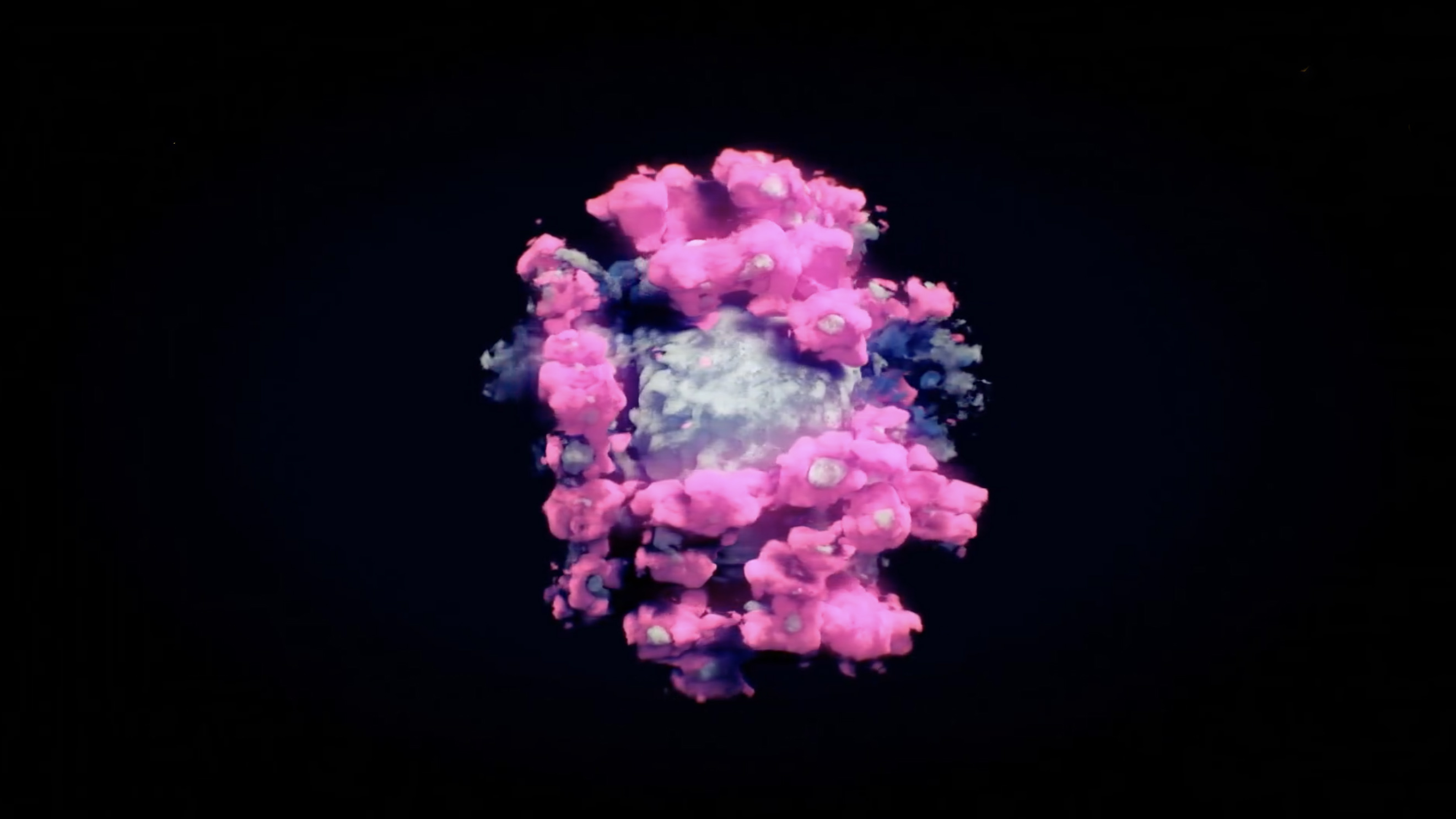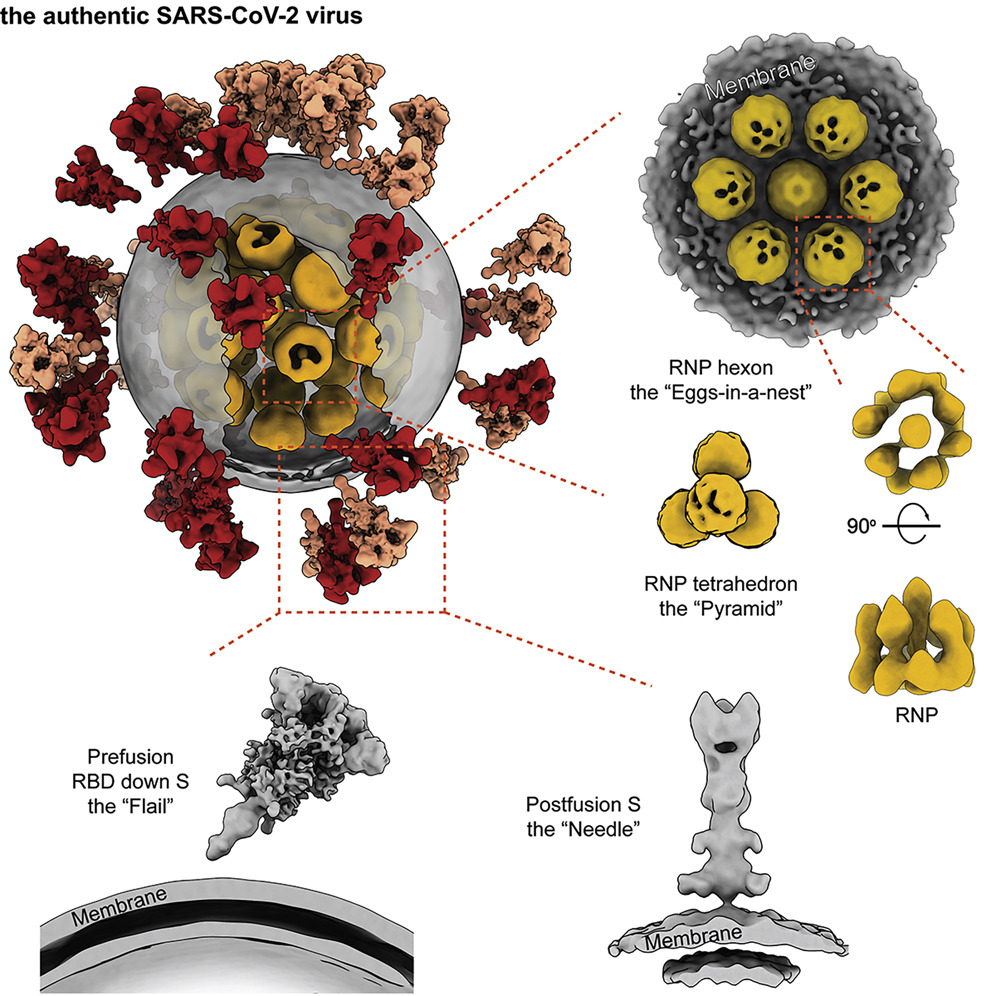00:52

This is the first real 3D image of the SARS-CoV-2 virus virion, the coronavirus causing the COVID-19 pandemic, not a computer graphic or model of it.
The image was unveiled earlier this week by researchers from China's Tsinghua University, King Abdullah University of Science and Technology (KAUST), and the Austrian company Nanographics, a spin-off of the Vienna University of Technology.
A coronavirus virion is extremely small and invisible to the human eye. Therefore, taking a photo of it is nothing like taking pictures of a visible object with a regular camera.
So how have researchers achieved this?
First, researchers at Tsinghua University led by Professor Li Sai scanned SARS-CoV-2 virions from snap-frozen samples with cryo-electron tomography (cryo-ET), a technology that can obtain images of the virus in extreme resolution. In the process, they managed to preserve the spike proteins of the virus samples in their structure as best as possible.
Based on the scans of the virus samples provided by the Tsinghua team, Nanographics turned them into stunning 3D visualization showing the shape of SARS-CoV-2 virions using a technique from KAUST.
By identifying different parts of the virus and coloring them with artificial colors, the researchers show the real coronavirus in unprecedented detail for the first time.
Why has the Tsinghua team scanned the coronavirus?
Helping to capture the first 3D image of the coronavirus is just a minor achievement by Li Sai's team.
They unraveled the overall molecular architecture of the SARS-CoV-2 virus in September, a finding that significantly contributed to global scientists' understanding of the virus and the development of COVID-19 vaccines.

A graphical abstract of the molecular architecture of the SARS-CoV-2 virus. /Qsinghua University
A graphical abstract of the molecular architecture of the SARS-CoV-2 virus. /Qsinghua University
Their finding was published on the prestigious scientific journal Cell on September 15.

